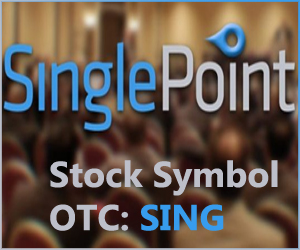Psychedelic Drug Development Or Clinics: Which Is The Better Path To Investor Profits?
Marijuana Stocks, Finance, & InvestingUncategorized March 17, 2021 MJ Shareholders


- Drug development represents home-run potential for investors in psychedelic stocks, where even a single drug success can generate a pay-day in the $100s of millions
- Mental health treatment presents an opportunity to displace existing mental health services with superior therapies for the over 1 billion people in need of treatment
- IP development is also becoming an increasingly important component of the psychedelic drug industry.
The psychedelic drug industry is starting to develop. Increasing numbers of public companies in this sector have commenced trading.
As the industry evolves, investors are being presented with (primarily) two alternative business models.
- A focus on drug development
- A focus on psychedelics-assisted mental health clinics
Naturally, there are also some companies with hybrid business models that are combining drug development with clinic operations.
Investors looking at the profit potential of this emerging sector seek to answer an elementary question. Which facet of this industry offers the greatest investment potential: drug development or clinic operations?
To answer this question, Psychedelic Stock Watch is taking a look at both branches of the industry. We also reached out to a couple of the public companies for their thoughts on the merits of each approach.
Drug development and clinic operations: targeting huge markets
Investors will likely already have read some of the reports of the spectacular successes in clinical trials of psychedelic drugs. Before weighing drug development versus clinic operations, it would aid investor’s perspective to have some overall parameters for the industry.
b) Size of the treatment market(s)
c) Wide-open playing field
As Psychedelic Stock Watch has reported, psychedelic drug development initiatives are already moving far beyond the boundaries of mental health care, and into many general (and large) healthcare treatment markets.
However, for the purposes of this article, we’ll focus only on the treatment population with respect to mental health-related conditions. Even in the realm of mental health alone, the numbers are staggering.
The “Mental Health Crisis” only spotlights stress-related disorders like depression, anxiety, substance abuse and PTSD. But over 1 billion people grapple with these issues alone, roughly 1 in 6 people on the planet.
Naturally, with this many people seeking treatment, the individual treatment markets are also enormous – all with multi-billion-dollar potential.
As the largest overall treatment market, U.S. numbers are most readily available. Altogether, roughly $300 billion is spent each year just in the United States on mental health drugs and services.
Most of that money is spent poorly.
Two-thirds of Americans exhibiting symptoms of depression don’t even seek treatment because existing therapy options are so inadequate. Two-thirds of the U.S. veterans receiving treatment for PTSD from the Department of Veterans Affairs obtain no benefits from their treatment. That’s a big reason why the U.S. Department of Defense is the world’s largest individual donor for psychedelic drug research.
The psychedelic drug industry has a wide-open playing field in mental health treatment. The same is basically true in drug development.
Big Pharma’s antidepressants are only effective for roughly half of those who are prescribed them, and one-third of that is merely the Placebo Effect.
Beyond that, multinational drug companies have largely vacated drug research into mental health. By 2016, Big Pharma had reduced its R&D in this area by 70%.
This is the current ‘competition’ for the psychedelic drug industry:
- Grossly inadequate mental health treatment
- Obsolete and ineffective drugs
For investors who are new to this space, that should make it clearer as to why those already invested in these companies are so excited. But which is the best road to profits, drug development or clinics?
Psychedelic drug development
It’s safe to say that most investors in psychedelic stocks were at least initially attracted to the sector for its drug development potential. After all, it’s called “the psychedelic drug industry”, not “the mental health treatment industry”.
Why is drug development a powerful lure for investors? Home-run potential.
Even a single drug success can mean a payday in the $100s of millions.
In 2015, drug manufacturer Amicus Therapeutics purchased biotech company, Scioderm for US$847 million. But the acquisition was very clearly targeting Scioderm’s lead drug, a treatment for a rare skin condition (epidermolysis bullosa) that was in a Phase III clinical trial.
Epidermolysis bullosa only affects roughly one million people worldwide. It’s a treatment market of ~US$2 billion globally.
In contrast, over 1 billion people grapple with addiction due to the substance abuse of drugs ranging from nicotine to heroin. The U.S. “addiction treatment” market is a $35 billion per year industry, while lacking any effective drugs to control addictive cravings.
How much would a “home run” in this area be worth for a psychedelic drug company (and its shareholders)?
Cybin Inc (CAN:CYBN / US:CLXPF) is a psychedelic drug company preparing to commence a Phase II clinical trial using psilocybin-assisted psychotherapy to treat Major Depressive Disorder.
Cybin has raised ~CAD$80 million in support of this research – in just the past 5 months. Yet it is currently trading at a market cap of only CAD$242 million. Priced at little more than 3 times cash.
We asked Cybin’s CEO Doug Drysdale to share his thoughts on the investment potential of psychedelic drug development.
“Cybin is focused on developing psychedelic treatments for mental health disorders with the potential for rapid onset of action and shorter duration of treatment – perhaps just 1-2 hours. Much of the interest in developing dedicated clinics has been to address the issue of long-acting treatments, 6-8 hours, where the current infrastructure might be inadequate.
This makes sense, but why build clinics to address this challenge when we can fix the problem more directly with our proprietary chemistry and drug delivery capabilities? With Cybin’s shorter-acting treatments, there are many existing clinics that could adapt to meet the needs of patients without the need to build a whole new infrastructure.”
That will be a thought-provoking angle for many psychedelics investors. Not only does drug development hold home-run potential, but (over the longer term) it could displace some/much of the need for mental health clinic services – and the infrastructure that goes with it.
At present, however, investors are paying increasing attention to the psychedelics-related opportunities in mental health therapy.
Psychedelics-assisted mental health clinics
Over 1 billion people have stress-related mental health disorders requiring treatment. Existing therapy options are dismal. That’s a big opportunity in mental health treatment, but it gets better.
An economic study by MAPS on MDMA-assisted treatment for PTSD estimated treatment savings of $103,000 per patient. Effective and efficient treatment.
Given the efficacies we are seeing in other psychedelics-based clinical trials, there is no reason why other areas of psychedelics-based treatment would not demonstrate similar economic efficiencies.
Cost-effective therapy implies the potential for robust operating margins. Furthermore, demonstrated cost savings will encourage health insurers to begin covering such treatments sooner rather than later.
One public company that already has operating (ketamine-assisted) mental health treatment clinics is Field Trip Health (CAN:FTRP / US:FTRPF). Field Trip’s market cap of CAD$270 million is currently 3rd largest among public companies. Clearly, a significant percentage of investor dollars are targeting this side of the industry.
Not just retail investors. Field Trip reported On February 26th that its recently announced bought deal financing has been upsized to CAD$82.875 million.
A huge opportunity, just in mental health treatment. But also a vehicle for drug development.
FT-104 is the lead drug development candidate in Field Trip’s R&D pipeline, which it describes as having “a pharmacological profile similar to psilocybin”. Field Trip’s clinic operations support this R&D, not only through revenue streams to offset drug development costs – but also as a rich source of empirical data to guide its drug research.
Given the potential synergies here, Field Trip isn’t the only public company looking to combine clinic operations with drug development.
Drug development and clinic operations
Mind Cure Health (CAN:MCUR / MCURF) is also active in both mental health clinic operations and drug development. But with a market cap of only CAD$44 million, it offers a much cheaper entry point for investors than FTRP.
MINDCURE is planning to open its first psychedelics-assisted clinic in British Columbia, scheduled for opening in May 2021. The company has a strategic investment in Alberta-based mental health care provider, ATMA.
MINDCURE has also crystallized its plans for psychedelic drug R&D. Its lead initiative, aimed at the enormous $121 billion traumatic brain injury (TBI) market, is being led by renowned neuroscientist, Dr. Dan Engle.
With no obvious leaning toward either clinic operations or drug development, we asked MINDCURE’s CEO, Kelsey Ramsden, how she views the industry dynamic of drug R&D versus clinic operations.
There is yet a third dynamic for investors to ponder in this emerging industry: IP development. IP to improve both the effectiveness and efficiency of clinic services. But also IP to (dramatically) expedite drug development.
MINDCURE is developing software that targets both of these angles.
“Target and prove with greater speed.” Translation: get to the finish line in drug development sooner. With drug R&D being capital-intensive, this doesn’t just mean faster drug development. It also means better use of investor capital.
Yet MINDCURE is priced at an even more compressed valuation than Cybin. Following the closing of its oversubscribed CAD$23 million private placement, MCUR is trading at less than two times cash.
There is some real meat-on-the-bone here for investors with respect to these digital health platforms for clinic services as well as data aggregation and processing for drug R&D.
This is next-generation IP and there is already big money behind it.
Mindstrong, a private company that is focusing on its own proprietary digital health platform, raised $100 million in its Series C financing round alone.
Artificial intelligence. Bioinformatics. Cutting-edge science that can further enhance the investment potential of the psychedelic drug industry.
So where does this leave investors?
Focus on drug development? Focus on clinic operations? Target the hybrids?
Drug development, clinics and IP: something for everyone
This is not a one-size-fits-all equation.
Investors who like the home-run potential of drug development and don’t mind longer-term investing will likely favor the drug development opportunities in this industry. And investors may not have to wait long for the first home runs.
MAPS’ Phase III clinical trial on MDMA-assisted psychotherapy for PTSD could conclude this year. Compass Pathways is expecting to report results from its own Phase II trial at the end of 2021. Other public companies who also have drugs in Phase II trials won’t be far behind.
Other investors have a more nuts-and-bolts focus on (near term) revenues and EPS. Those investors will obviously be more attracted to the pubcos with a heavy emphasis on the treatment side of the industry.
What about investors who have no clear preference for either drug development or clinics? For those investors, you can sit on the fence by investing in a psychedelics hybrid that plans to be active in both sides of the industry.
In short, the psychedelic drug industry is a multi-faceted sector. It offers investors extremely dynamic opportunities in drug development, in mental health services, and even in IP development.
Which is best? Chocolate, vanilla, or strawberry?
Nothing is stopping bullish investors from looking to capitalize on opportunities in all these areas. With psychedelic stocks currently “on sale”, new investors are unlikely to find a more attractive entry window for these companies than today.
DISCLOSURE: The writer holds shares in Cybin Inc and Mind Cure Health. Mind Cure Health is a client of Psychedelic Stock Watch.
MJ Shareholders
MJShareholders.com is the largest dedicated financial network and leading corporate communications firm serving the legal cannabis industry. Our network aims to connect public marijuana companies with these focused cannabis audiences across the US and Canada that are critical for growth: Short and long term cannabis investors Active funding sources Mainstream media Business leaders Cannabis consumers










